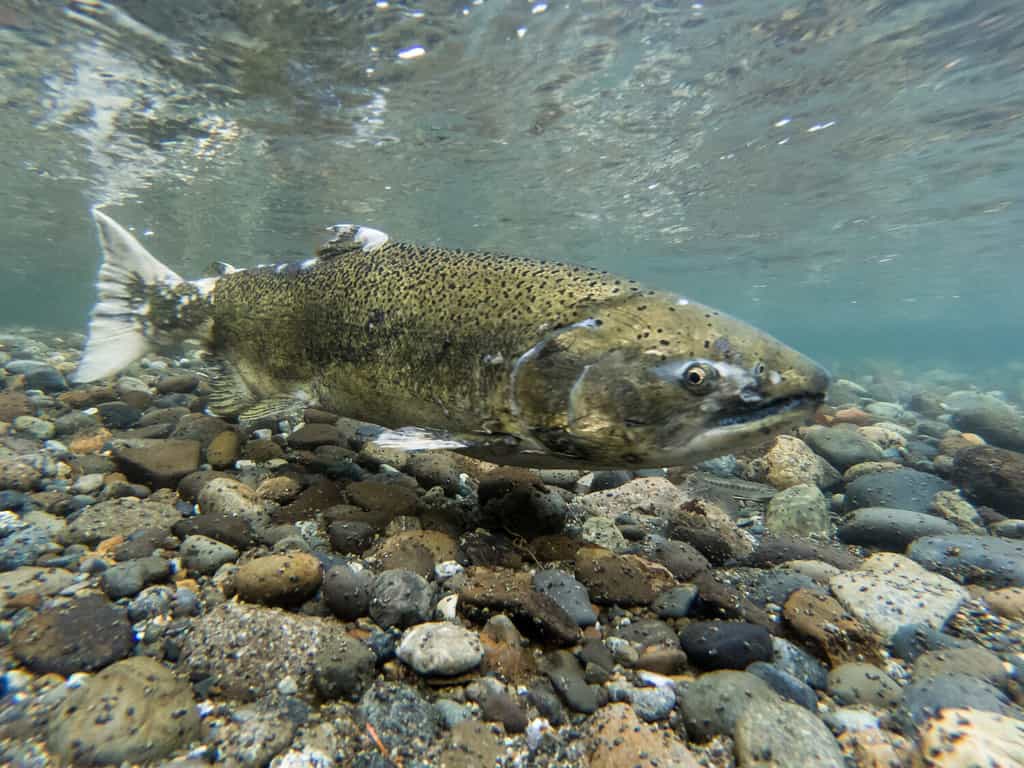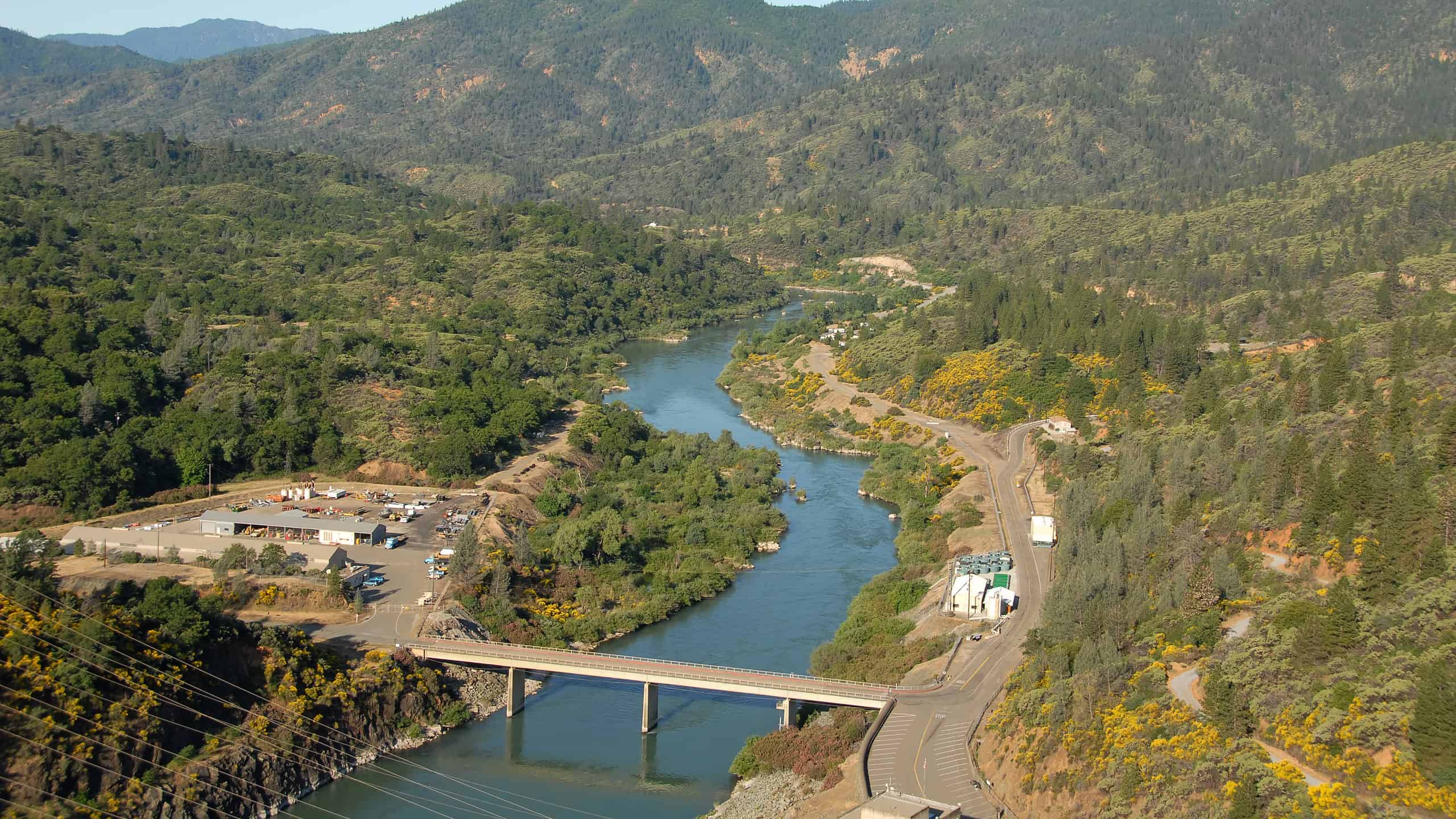The Sacramento River is a “powerhouse” river that provides food, water, and more to the people and animals that live on or near its shores. Today, we are going to take a deep dive into this river to learn: How deep is the Sacramento River? Plus discover a little about the history of this river and the importance that it has for the region’s people and wildlife. Let’s get started!
How Deep is the Sacramento River?

The Sacramento River is the largest river in California. The average depth of the Sacramento River is about 10 feet in the river route below Sacramento and about 6 feet above Sacramento to Colusa. However, some parts of the river are much deeper, especially where it has been dredged for larger boats and navigation purposes. For example, the Sacramento Deep Water Ship Channel, which connects the Port of Sacramento to the San Francisco Bay, is about 30 feet deep and 200 feet wide.
The amount of water that flows through the Sacramento River also changes throughout the year, depending on rainfall, snowmelt, and water management. The river’s average discharge near Sacramento is about 30,000 cubic feet per second, but it can range from less than 5,000 cubic feet per second in dry periods to more than 100,000 cubic feet per second in flood events. The highest recorded flow was 374,000 cubic feet per second in February 1986 during a flood.
Compared to other rivers in the region, the Sacramento River is generally deeper and has a greater water volume. For reference, the American River, which joins the Sacramento River near downtown Sacramento, has an average discharge of about 3,685 cubic feet per second. The Feather River, which is the largest tributary of the Sacramento River, has an average discharge of about 8,321 cubic feet per second.
Where is the Sacramento River, and Where Does It Flow?

An aerial view of the Sacramento – San Joaquin River Delta, California, USA
©Jeffrey T. Kreulen/Shutterstock.com
The Sacramento River is located in Northern and Central California in the U.S. It is the most important river in the region and the largest river in California. It starts in the Middle and South Forks near Mount Shasta, in the Klamath Mountains. From there, it flows roughly southwest for about 400 miles between the Cascade and Sierra Nevada ranges through the northern section of a region known as the Sacramento Valley.
The Sacramento River has many tributaries along its course, some of which are major rivers as well. The most important ones are the Pit, McCloud, Feather, and American rivers. The Pit River is the longest tributary of the Sacramento River, joining it near Shasta Lake. The Feather Rivejoins the Sacramento River near Verona. The American River joins the Sacramento River near downtown Sacramento, the state capital and the largest city along the river.
The Sacramento River ends at the Sacramento-San Joaquin River Delta. From there, it creates a large delta by combining with the San Joaquin River, then entering Suisun Bay right near the northern part of San Francisco Bay. The resulting delta has historically been one of the most important natural features of the region and had a lot to do with why the region was settled in the first place.
The History of the Sacramento River
The Sacramento River has been around well before humans began to settle around the region. The first humans to live in the area were Native American tribes, including the Wintu, Maidu, Yana, Yahi, and Patwin. These people groups lived near the river (and other tributaries) and relied on them for thousands of years before settlers from Europe came.
The first Europeans to fully explore the river were Spanish missionaries and soldiers who arrived in the late 18th century. They named the river Río Sacramento, which translates to “Sacred River” (the Spaniards were very influenced by Catholicism). They also built lots of missions, forts, and other structures along the river. The goal of the Europeans was first to convert native peoples to Christianity and later to claim the region for Spain. By the time the Europeans had fully settled the region, it was reported that nearly 70% of the native population had been killed from disease alone, with smallpox being the worst of them all.
The river became a hub for settlers and adventurers during the Gold Rush of 1849 (maybe the most famous gold rush in history) when gold was discovered at Sutter’s Mill on the American River. Since the American River is a tributary of the Sacramento River, the resulting flood of people went to work panning along the banks of the Sacramento and the other rivers of the region. Thousands of people from around the world moved to the river valley to find gold and strike it rich (and were given the name forty-niners after the year the rush started). The city of Sacramento was founded in 1848 and was primarily used as a hub for the ensuing population surge. The river also served as a route for boats to carry people and supplies inland from San Fransisco.
Through the years, the river has changed drastically. The development of the valley ended up causing environmental and social challenges, such as floods, droughts, pollution, diseases, conflicts, and displacement. The river was altered by dams, levees, canals, and diversions to provide water supply, flood control, irrigation, hydropower, and navigation for the growing population and economy of California. The river’s ecosystem (an essential one for the region) was nearly destroyed by overfishing, mining, logging, farming, and the intentional or accidental introduction of invasive species.
The Impact of the Sacramento River on the Region

Extremely populated and dense cities in California like San Fransisco and Los Angeles rely on the water provided by the Sacramento River through initiatives like the State Water Project and the Central Valley Project.
©MILA Zed/Shutterstock.com
The Sacramento River is not only the largest river in California, but also one of the most influential and beneficial for the region. The river has a significant impact on the economy, environment, and society of Northern and Central California. Even further, the downstream impact (in a less literal way) of the river in things like agriculture is felt on a global scale.
As far as human impact goes, the Sacramento River provides water and irrigation for millions of acres of farmland in the Sacramento Valley and beyond. This region is one of the most productive and essential agricultural centers of the U.S. The river valley produces a variety of crops, including rice, almonds, walnuts, tomatoes, peaches, and grapes, as well as livestock and dairy. The river also sustains a commercial fishing industry, especially for salmon and sturgeon, as well as recreational fishing.
On top of food, the river also supports and generates hydro-electric power for millions of homes and businesses. The river is part of the Central Valley Project and the State Water Project, two of the largest water management systems in the U.S. These projects regulate the flow and distribution of water throughout California to some of the densest population centers (LA, San Fransisco, and more) in the state. The river also enables navigation and transportation for goods and people, connecting the inland regions with the San Francisco Bay Area and the Pacific Ocean. The State Water Project alone provides water to over 25 million Californians.
The Ecology of the Sacramento River
The Sacramento River is a complex and dynamic ecosystem that supports a remarkable diversity of life. The river and its tributaries provide habitat for hundreds of species of plants and animals, many of which are endemic to the region or endangered. The river also acts as a stabilizing force for the Sacramento-San Joaquin Delta and San Francisco Bay estuary regions, keeping things in balance.
Some of the notable ecological biomes impacted by the Sacramento River include:
- Riparian forests: the trees and shrubs that grow along the river banks and floodplains.
- Wetlands: the areas that are periodically or permanently saturated with water. They include marshes, swamps, sloughs, ponds, and pools.
- Aquatic regions: habitats that are the areas that are submerged or partially submerged in water. They include riffles, pools, runs, backwaters, side channels, gravel bars, islands, and submerged vegetation. They host a variety of fish and invertebrates, especially anadromous fish (fish that migrate between freshwater and saltwater), such as salmon, steelhead, sturgeon, lamprey, shad, smelt, and striped bass

The Sacramento River is one of the most important spawning grounds in the world for the Chinook salmon species.
©Kevin Cass/Shutterstock.com
One of the most important species found within the Sacramento River is Chinook salmon, and the river is home to the southernmost run of Chinook in North America. Chinook salmon are anadromous, meaning they are born in freshwater, migrate to the ocean, and return to freshwater to spawn. The river is home to four “runs” of Chinook salmon: fall-run, late fall-run, winter-run, and spring-run. Each run has different timing, distribution, and status under the Endangered Species Act. The winter-run and spring-run are listed as endangered and threatened, while the fall-run and late fall-run are not listed but aren’t totally stable, either.
Some of the most pressing conservation threats for the salmon include damming, diversions, pollution, and competition with invasive species. These threats reduce the amount and quality of habitat available for spawning and migration. As a result, the salmon populations have declined significantly over the years.
The Sacramento River salmon require conservation and restoration efforts to protect and enhance their health and value. Some of the conservation and restoration actions include water management, fish passage, floodplain reconnection, channel restoration, pollution prevention, invasive species control, and climate adaptation. These actions aim to balance the water needs of humans and nature, restore the natural functions and diversity of the river ecosystem, and increase the resilience and adaptation of the salmon to changing conditions. For example, one of the funnier conservation attempts, the Nigiri Project, is an attempt to help use the rice fields in the delta region to help provide rearing areas for the salmon. What do you call fresh salmon on rice?
Conclusion
The Sacramento River is a large river that flows for 400 miles through Northern and Central California. The river has an average depth of about 10 feet, but some parts are much deeper, especially where it has been dredged for navigation. The river is vital for the region’s economy, environment, and society, as it provides water, power, food, recreation, and habitat for many species, including the iconic Chinook salmon.
Thank you for reading! Have some feedback for us? Contact the AZ Animals editorial team.








